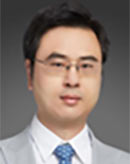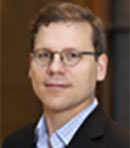SPS Webinar: Optimal Robust Adaptive Beamforming Design Problems with Nonconvex and/or Convex Uncertainty Sets
Date: 24 September 2024
Time: 8:00 AM ET (New York Time)
Presenter(s): Dr. Yongwei Huang, Dr. Sergiy A. Vorobyov
Based on the IEEE Xplore® article:
"Robust Adaptive Beamforming via Worst-Case SINR Maximization With Nonconvex Uncertainty Sets", published in the IEEE Transactions on Signal Processing, January 2023.
Download article: Original article is open access, and publicly available to all for download.
Abstract
In this webinar, the presenters first briefly present the history of most significant developments in optimization-based robust adaptive beamforming (RAB). It motivates a formulation of the RAB problem, in terms the worst-case signal-to-interference-plus-noise ratio (SINR) maximization under a nonconvex uncertainty set for the steering vectors and a convex uncertainty set for the interference-plus-noise covariance matrix, which is the focus of the webinar. The former uncertainty set consists of a similarity constraint and a (nonconvex) double-sided ball constraint while the latter uncertainty set includes a sphere and a positive semidefinite constraint. This problem clearly is nonconvex. To tackle it, the worst-case SINR maximization problem is turned into a quadratic matrix inequality (QMI) problem using the strong duality of semidefinite programming. Then a linear matrix inequality (LMI) relaxation for the QMI problem is proposed, with an additional valid linear constraint. Necessary and sufficient conditions for the tightened LMI relaxation problem to have a rank-one solution are established. When the tightened LMI relaxation problem still has a high-rank solution, the LMI relaxation problem is further restricted to become a bilinear matrix inequality (BLMI) problem. Thus, the presenters propose an iterative algorithm to solve the BLMI problem that finds an optimal/suboptimal solution for the original RAB problem by solving the BLMI formulations. Then, simulation examples are presented to showcase the improved array output SINR of the proposed robust beamformer. If time is permitted, they will present some more recent results on RAB design with robust sidelobe level control.
Biography

Yongwei Huang (SM’16) received the B.Sc. Degree in Information and Computational Science and the M.Sc. Degree in Operations Research from Chongqing University, Chongqing, China, in 1998 and 2000, respectively, and the Ph.D. Degree in Systems Engineering and Engineering Management from The Chinese University of Hong Kong, Hong Kong, in 2005.
He is currently a Professor with the School of Information Engineering, Guangdong University of Technology, Guangzhou, China, where he joined in 2016. Prior to the position, he held a faculty position with Hong Kong Baptist University, Hong Kong, and several research appointments, namely, with the Hong Kong University of Science and Technology, Hong Kong, the University of Naples Federico II, Naples, Italy and others. His research interests include optimization theory and algorithms, and their applications to array signal processing and beamforming, and to signal processing for wireless communications, radar and finance.
Dr. Huang was a Member of Sensor Array and Multichannel Signal Processing Technical Committee of IEEE Signal Processing Society in 2017-2022. He was an Associate Editor for the IEEE Signal Processing Letters in 2016-2020, a Handling Editor of the Signal Processing (Elsevier) in 2020-2024. He has been an Associate Editor for the IEEE Transactions on Signal Processing since 2024 and an Associate Editor for the IEEE Transactions on Signal and Information Processing over Networks since 2021. He was a recipient of the Best Poster Award in the 2007 Workshop on Optimization and Signal Processing.

Sergiy A. Vorobyov (F’18) received the M.Sc. and Ph.D. Degrees in Systems and Control from the National University of Radio Electronics, Kharkiv, Ukraine, in 1994 and 1997, respectively.
He is currently a Professor with the Department of Information and Communications Engineering, Aalto University, Espoo, Finland. Since his graduation, he held various faculty positions with the University of Alberta, Edmonton, AB, Canada, the Joint Research Institute between Heriot-Watt University and Edinburgh University, Edinburgh, U.K., etc. His research interests include optimization and multi-liner algebra methods in signal processing and data analysis, statistical and array signal processing, sparse signal processing, estimation, detection and learning theory and methods, and multi-antenna, very large, cooperative, and cognitive systems.
Dr. Vorobyov was the recipient of the 2004 IEEE Signal Processing Society Best Paper Award, 2007 Alberta Ingenuity New Faculty Award, 2011 Carl Zeiss Award, 2012 NSERC Discovery Accelerator Award, and other awards. He has been currently the Senior Area Editor for the IEEE Signal Processing Letters since 2016. He was an Associate Editor for the IEEE Transactions on Signal Processing in 2006–2010 and the IEEE Signal Processing Letters in 2007–2009. He was a Member of the Sensor Array and Multi-Channel Signal Processing and Signal Processing for Communications and Networking Technical Committees of the IEEE Signal Processing Society in 2007–2012 and 2010–2016, respectively. He was the Track Chair for Asilomar 2011, Pacific Grove, CA, USA, the Technical Co-Chair for IEEE CAMSAP 2011, Puerto Rico, the Tutorial Chair for ISWCS 2013, Ilmenau, Germany, the Technical Co-Chair for IEEE SAM 2018, Sheffield, U.K., the Technical Co-Chair for IEEE CAMSAP 2023, Costa-Rica, and the General Co-Chair for EUSIPCO 2023, Helsinki, Finland.













